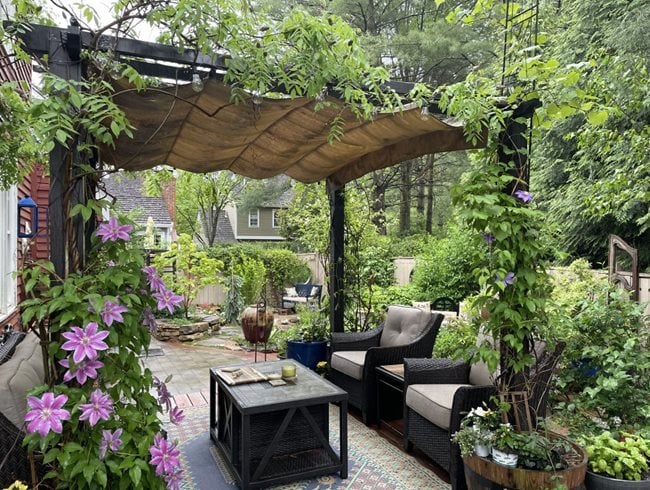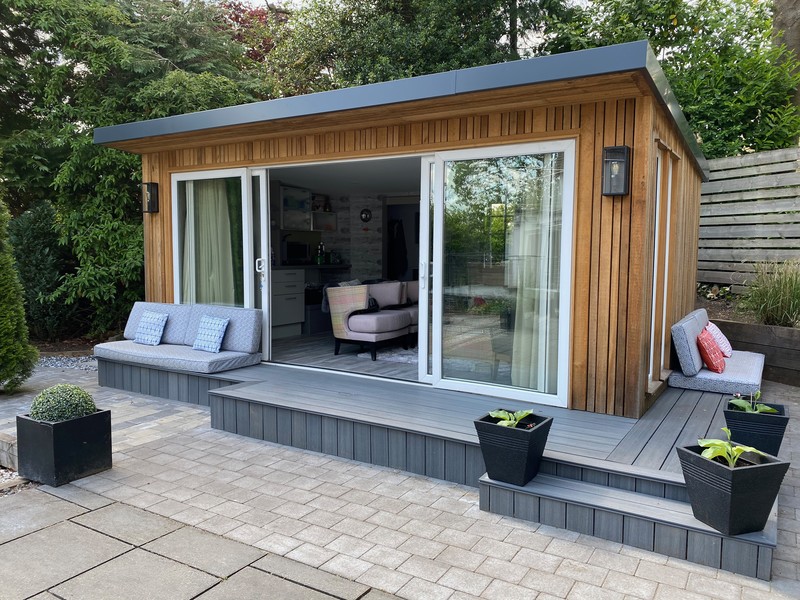Free Advice On Planning Permission On Garden Buildings
What Are The Size Limitations You Have For Your Garden Rooms, Etc.?If you're considering the construction of conservatories or garden rooms or outhouses as well as garden offices sizes can frequently determine if planning permission is required. Here's a list common size criteria which may require you to seek permission for planning.
Planning permission is required for any detached outbuilding in excess of 50% of the total that surrounds the home (excluding its footprint).
Height limitations:
Single-story buildings The maximum eaves height cannot exceed 2.5 meters, and the overall height should not exceed 4 meters in the case of a dual-pitched roof or 3 meters in the case of any other type of roof.
If a building is located within 2 meters of a property boundary the height must not be higher than 2.5 meters.
Floor Area:
The building code might be required for structures that are bigger than 30 square metres even though planning permission isn't required.
Proximity to boundaries
Planning permission is generally required for structures that are within 2 metres of the property's boundary.
Building Usage
There is no limit on size, but the purpose for which you intend to use the garden space could affect the need for permission to plan. Planning permission may be required if, for instance the structure is planned to be used for office or residential space.
Permitted Development Rights:
Permitted Development Rights (which permits certain kinds of work to be completed without requiring full plans) have specific size limitations and conditions. These rights can vary depending on if the property is in a conservation zone or is subject to restrictions.
Conservatories and Extensions:
For a rear single-story addition the maximum height is 3 meters or 4 meters, depending on the type of house, whether semi-detached or a terraced residence. The depth can be increased to 8 meters for detached houses and by 6 feet for semi detached or terraced houses, based on the conditions.
The ceiling of a single-story rear extension should not exceed 4 meters.
Side Extensions
For side extensions, the width should not exceed more than half the width of original house, and the maximum height should not exceed 4 meters.
Volume Restrictions
In some areas, like conservation zones or Areas of Outstanding Natural Beauty Any addition to the original building which is greater than 10% or increases its volume by 50 cubic meter may require planning consent.
Front Extenders
Planning permission is typically required for extensions that extend beyond the front facing the road that was the initial residence.
It's essential to verify with the local authorities, since regulations vary based on where you live and the condition on the property. It's important to check with your local planning authority as rules can vary depending on the local council and the specific conditions of the property. Have a look at the best garden extensions for more advice including copyright garden room, outhouses, armoured cable for garden room, best heater for log cabin, Tring garden rooms, garden room or extension, small garden office, out house, Tring garden rooms, 4m x 4m garden room and more.

What Planning Permission Is Required For Garden Rooms And Other Such Spaces. With Respect To Listed Buildings?
When planning to build garden rooms, conservatories, outhouses, garden offices, or extensions on the property of a listed building particular considerations and rules apply. Here are some key points to remember when obtaining planning permission for these projects The building's listed status:
Generally speaking, any extension, alteration or addition of construction within the boundaries of a protected building requires listed building approval in addition planning permission. The property's character and uniqueness can be affected by any changes.
Historical Character and its impact
Planning applications are required for any structure or extension that could change the characteristics of the listed property or its surroundings. Garden rooms and outbuildings are also included.
Design and Materials
The style of a new structure must be in line with the architectural and historic significance of a listed structure. Planning permission might be needed for bespoke designs or the use of traditional building materials.
Nearness to the listed Building
New structures constructed near historic sites are scrutinized for their impact on setting and aesthetics. To ensure that they do not detract the character of the building, planning permission is required.
Size and Scale
The proposed garden room, conservatory size, or extension scale must be proportionate to the building that is listed. Larger structures tend to need a thorough assessment and planning permission.
Location:
The location (whether it is in front, behind, or to the side of an listed structure) can influence the need for a permit. Locations that are visible or have a major impact on the building's main views will typically be the subject of a thorough review.
Changes within the company:
Even if you're removing the old structure, all internal modifications that are built should be approved by the planning department and have listed building consent.
Conservation Area Overlap
Additional restrictions could be imposed Additional restrictions may apply if the listed structure is within a conservation zone. Planning permission is required in order to make sure that the conservation area and listed building regulations are in place.
The Building is Used for:
The purpose of the garden room or outbuilding can influence the need to obtain planning permission. The uses that require a substantial shift, such a commercial or residential use will be scrutinized more thoroughly.
Impact on structural structure:
If a building could affect the structural integrity of the structure, it will need planning permission.
Local Authority Guidelines
Local authorities typically have guidelines regarding listed buildings that outline what types of modifications and construction are permitted. The guidelines must be adhered to if you have planning permission.
Professional Assessments
Conservationists often perform detailed analyses when reviewing proposals to alter listed structures. These assessments are used to determine if the proposed changes are suitable and also to justify the application for planning permission.
As a summary It is generally essential to obtain planning permission and a listed construction consent for any extensions gardens, conservatories or garden rooms, as well outhouses or conservatories attached to listed structures. Get in touch with your local planner and heritage professionals at the beginning of the process of planning to ensure that you are in compliance with the relevant regulations and to ensure the preservation of the architectural and historical integrity. See the top outdoor office pod for more examples including insulated garden buildings, conservatories and garden rooms, how to lay decking on soil, garden outhouses, garden room or extension, outhouses for garden, copyright outbuildings, garden room or extension, insulated garden buildings, outhouse uk and more.

What Type Of Planning Permit Do You Need For Garden Rooms Or Other Areas.?
Planning permission is required to construct garden rooms, outhouses or gardens offices. The infrastructure and utilities are also important considerations. Consider these key factors Drainage and water supply
If the proposed structure requires connections to water supply and drainage systems, planning approval might be needed. The local authority responsible for water may have to assess the effects on the local water and sewage system.
Electricity and Gas Connections:
Planning permission might be needed if the new structure needs to be connected to gas or electricity. This connection must adhere to building regulations and safety requirements.
Utility Easements:
Planning permission is required for structures that are located in easements (areas designated to accommodate utility lines and infrastructure). Local utility providers may require approval for the construction within these zones.
Septic Tanks and Sewage Systems
A planning permit is required if a new structure requires a septic or an onsite wastewater treatment system. For these systems it is crucial to comply with the requirements of the environmental and health standards.
Drainage and Surface Water Management
Planning permission might be needed to address drainage and surface water runoff of the proposed structure. In order to stop erosion, flooding and pollution of water may have to be implemented.
Access to Utilities for Construction:
A planning permit may be required for temporary access to utilities like water, for example, during construction. Connections for temporary use must meet safety and environmentally standards.
Impact on local infrastructure:
The local authority will determine whether the infrastructure that is in place could help support the development. This includes utilities, roads as well as public services. Local authorities will assess the infrastructure that is in place and whether it is able to support the development.
Waste Management and Recycling
Planning permission may involve requirements for waste management as well as recycling after construction. To limit the environmental impact, it's important to have adequate provisions for waste management and recycling.
Efficiency and Renewable Energy. Efficiency as well as Renewable Energy
Planning permission may be needed for the installation of energy-efficient components or systems for renewable energy (such as solar panels or heat pumps) within the new building. Environmental and building regulations must be met.
Telecommunications and Internet connectivity:
Planning permission may be needed for a new building that requires internet or telecommunications. It is crucial to ensure compliance with the rules and regulations for telecoms.
Access to Footpaths and Roads
For example, it may be necessary to obtain planning permission prior to being able to construct or alter the design of a footpath. The construction of road and footpaths should be in line with safety rules.
Public Transport Accessibility:
Planning permission is required when the new structure will affect public transport facilities such as railway stations or bus stations. Compliance with regulations and standards for infrastructure for public transport is vital.
In short, utilities, infrastructure, and other factors are key in determining the need for planning permission to build gardens, conservatories, or outhouses. Consult the local planning authority as early as you can during the planning stage to ensure compliance with relevant standards and regulations. Follow the top rated garden office planning permission for website info including outhouse building, garden office hertfordshire, gym outhouse, small garden office, garden outhouses, what size garden room without planning permission, best heater for log cabin, gym outhouse, myouthouse, copyright outhouse and more.
